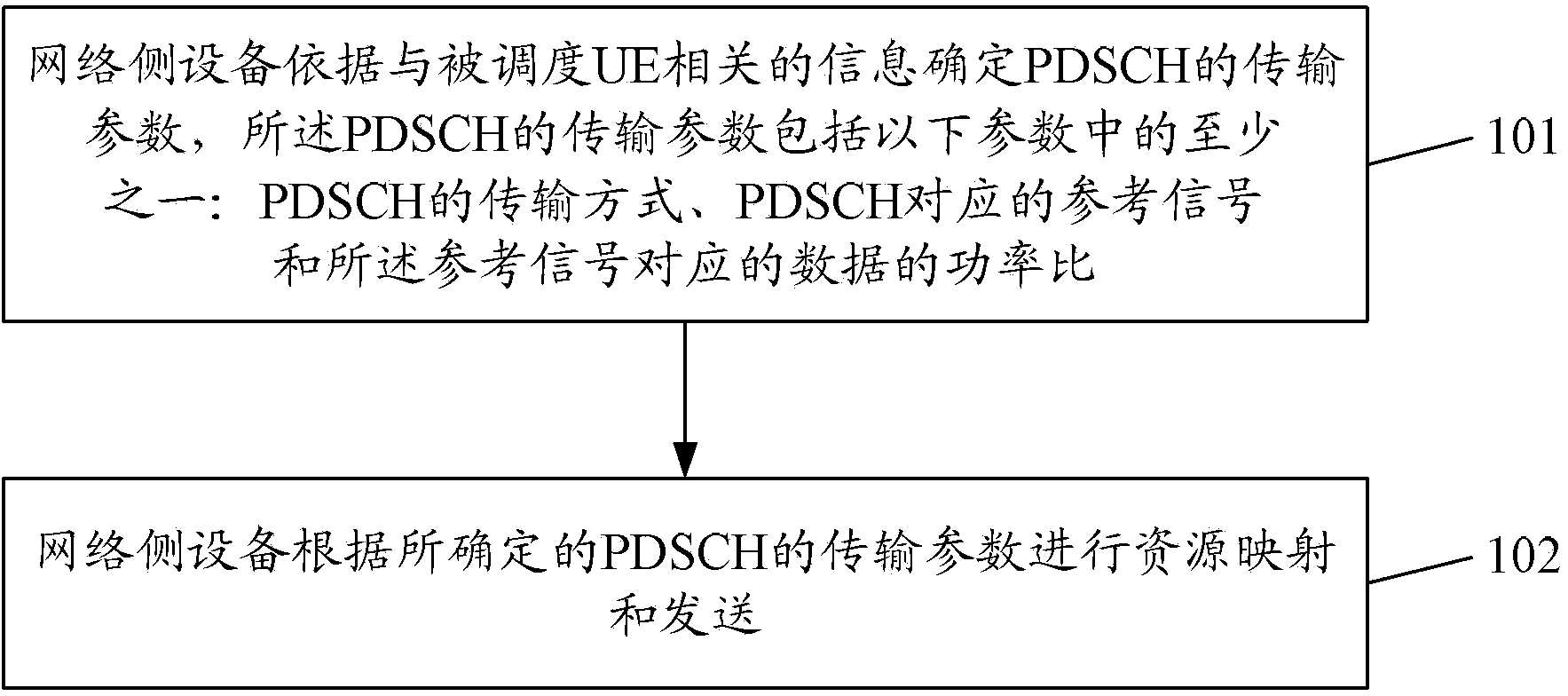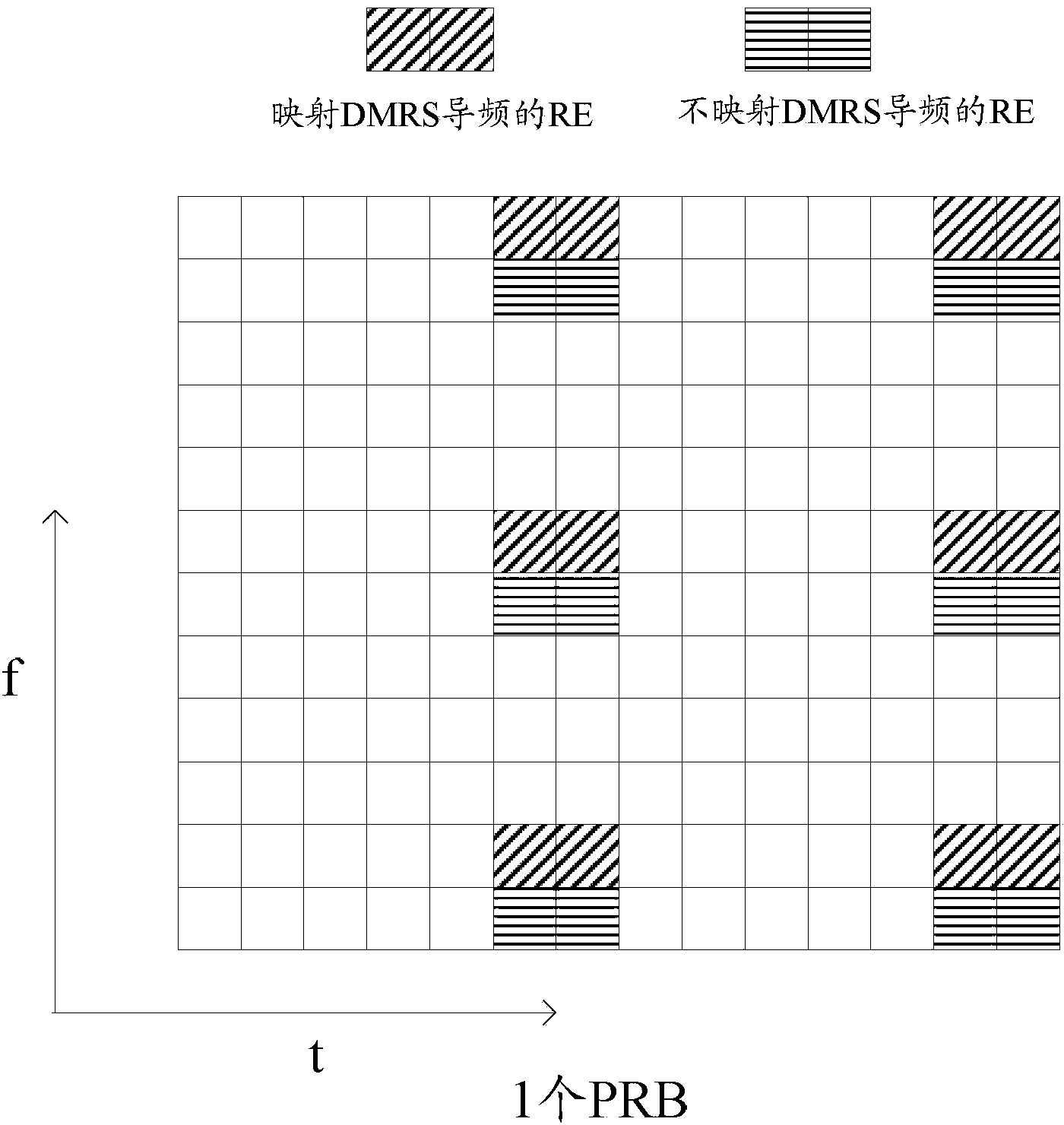PESCH (physical downlink shared channel) transmission method, system and network side equipment
A technology of physical downlink sharing and network-side equipment, which is applied in transmission path sub-channel allocation, wireless communication, pilot signal allocation, etc., and can solve problems such as pilot power enhancement
- Summary
- Abstract
- Description
- Claims
- Application Information
AI Technical Summary
Problems solved by technology
Method used
Image
Examples
Embodiment 1
[0243] The network-side device uses the newly added carrier type to transmit data, and the transmitted data corresponds to a single transmission block. The network-side device combines the UE's transmission mode, UE version and support capability information, and the serving cell where the PDSCH is located based on the channel status indication information reported by the UE. The type information and the subframe type information of the PDSCH determine the transmission parameters of the PDSCH; assuming that the version of the UE is a UE that supports NCT, the serving cell type of the UE is NCT, and the transmission mode configured by the UE is TM10 or TM9, the PDSCH If there is no CRS transmission or only RCRS transmission in the subframe, the transmission mode of a single DMRS antenna port is selected. According to the resource mapping corresponding to a single DMRS antenna port, the Localized / Distributed VRB indicator bit in the physical layer control signaling DCI Format 1A i...
Embodiment 2
[0245] The network-side device uses the newly added carrier type to transmit data, and the transmitted data corresponds to a single transmission block. The network-side device combines the UE's transmission mode, UE version and support capability information, and the serving cell where the PDSCH is located based on the channel status indication information reported by the UE. The type information and the subframe type information of the PDSCH determine the transmission parameters of the PDSCH. Assume that the version of the UE is a UE that supports NCT, the serving cell type of the UE is NCT, and the transmission mode configured by the UE is TM10 or TM9. If there is no CRS transmission or only RCRS transmission in the subframe, the transmission mode of a single DMRS antenna port is selected, and according to the resource mapping corresponding to a single DMRS antenna port, the Localized / Distributed VRB indicator bit in the physical layer control signaling DCI Format 1A is used, ...
Embodiment 3
[0249] The network-side equipment uses the new carrier type to transmit data, and the transmitted data corresponds to a single transmission block. The network side combines the UE's transmission mode, UE version and support capability information, and the serving cell type where the PDSCH is located based on the channel status indication information reported by the UE. information, the subframe type information of PDSCH to determine the transmission parameters of PDSCH, assuming that the version of the UE is a UE that supports NCT, the serving cell type of the UE is NCT, and the transmission mode configured by the UE is TM10 or TM9, the subframe where the PDSCH is located If the frame has no CRS transmission or only RCRS transmission, select the transmission mode of a single DMRS antenna port, and map according to the resources corresponding to multiple DMRS ports. For example, assume that the DMRS ports are (7, 8, 9, 10), but only use the One of the DMRS port positions is used...
PUM
 Login to View More
Login to View More Abstract
Description
Claims
Application Information
 Login to View More
Login to View More - R&D
- Intellectual Property
- Life Sciences
- Materials
- Tech Scout
- Unparalleled Data Quality
- Higher Quality Content
- 60% Fewer Hallucinations
Browse by: Latest US Patents, China's latest patents, Technical Efficacy Thesaurus, Application Domain, Technology Topic, Popular Technical Reports.
© 2025 PatSnap. All rights reserved.Legal|Privacy policy|Modern Slavery Act Transparency Statement|Sitemap|About US| Contact US: help@patsnap.com



